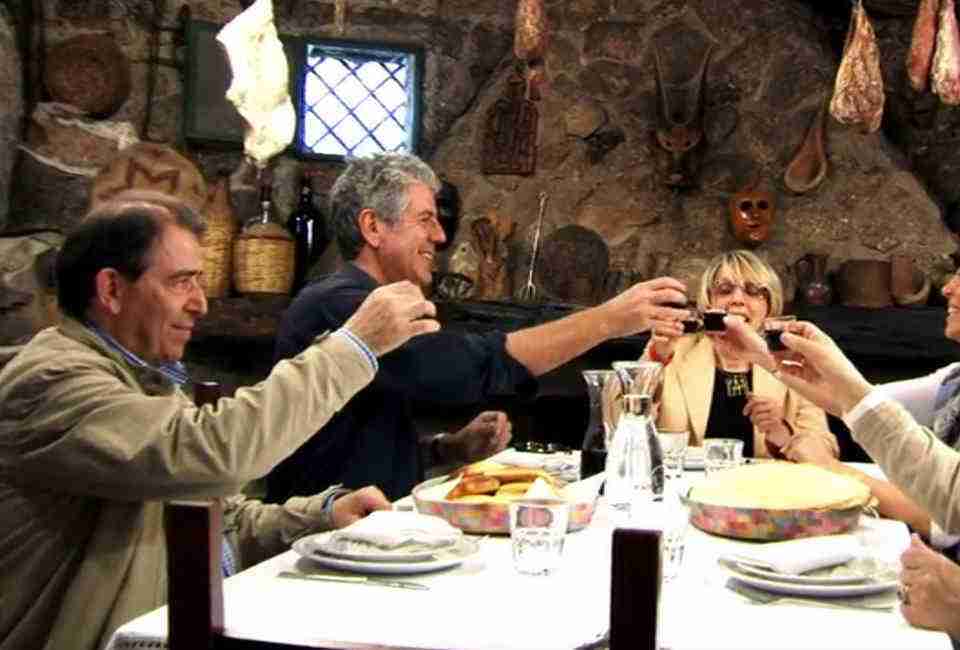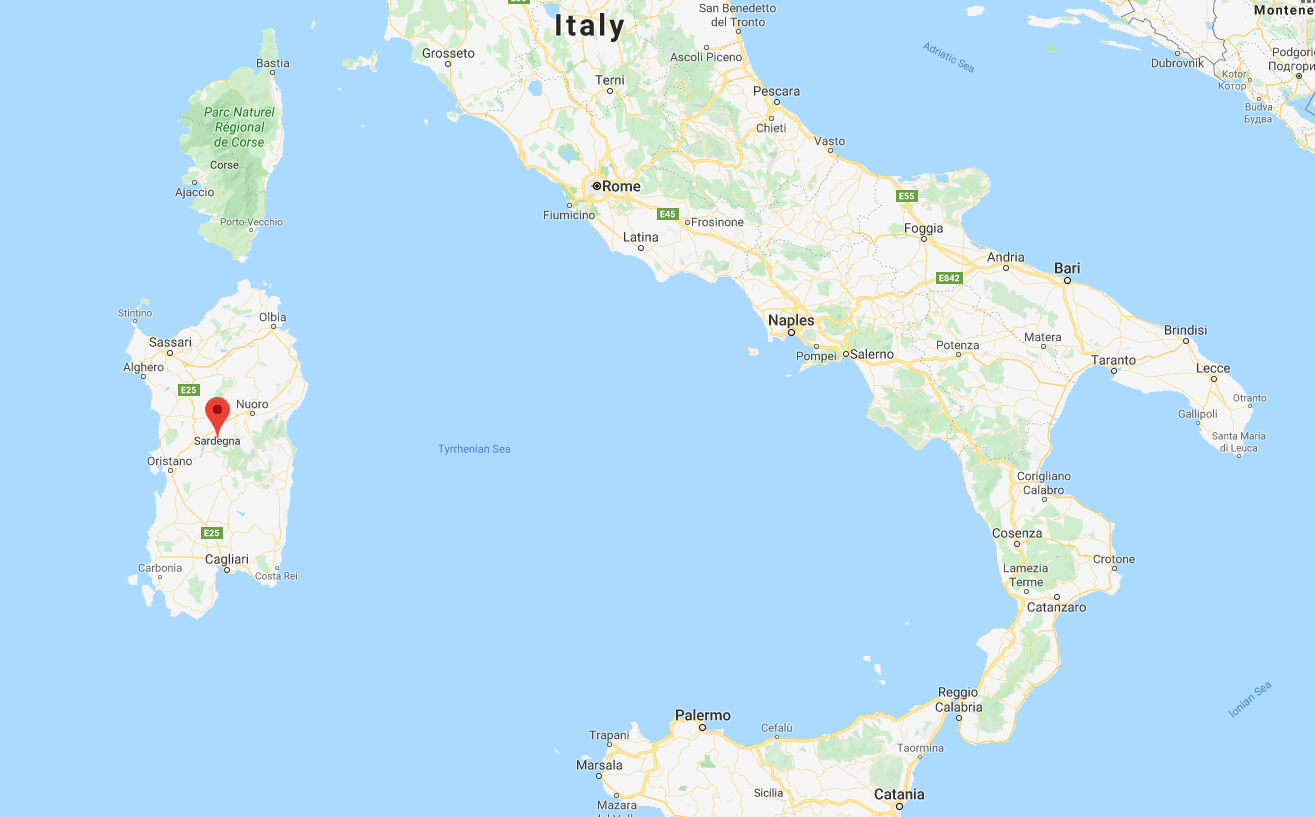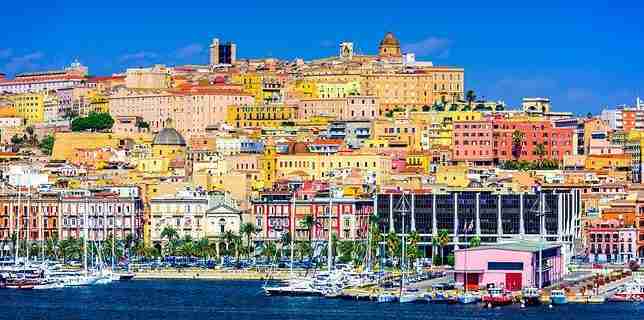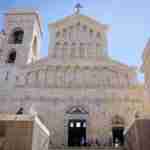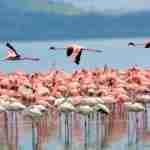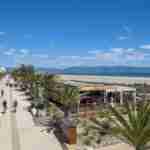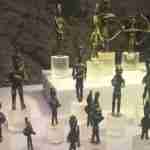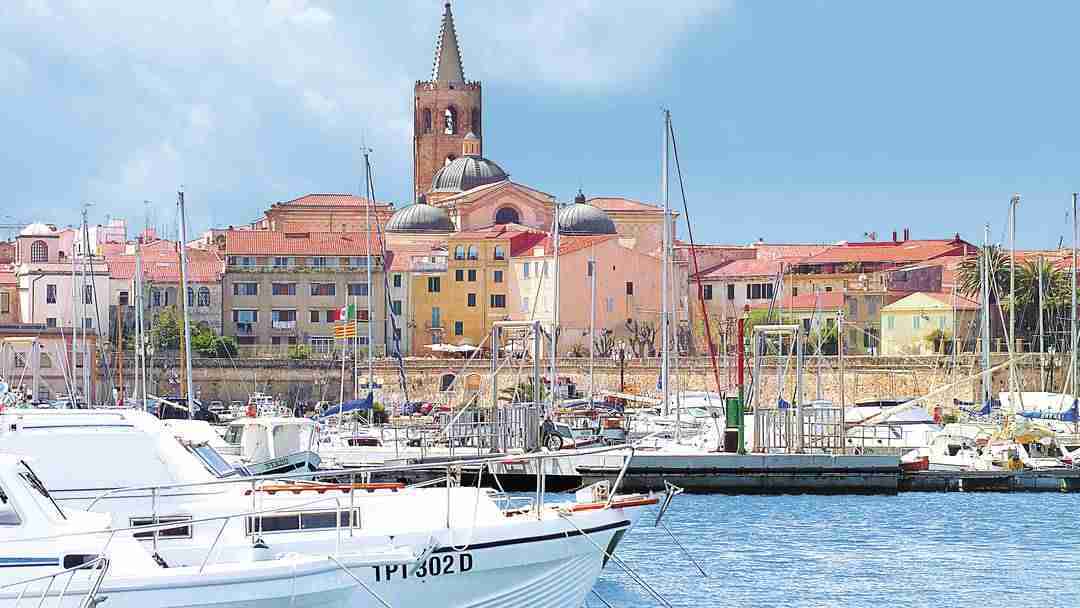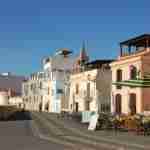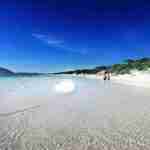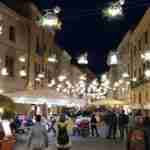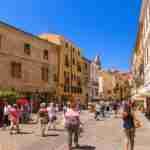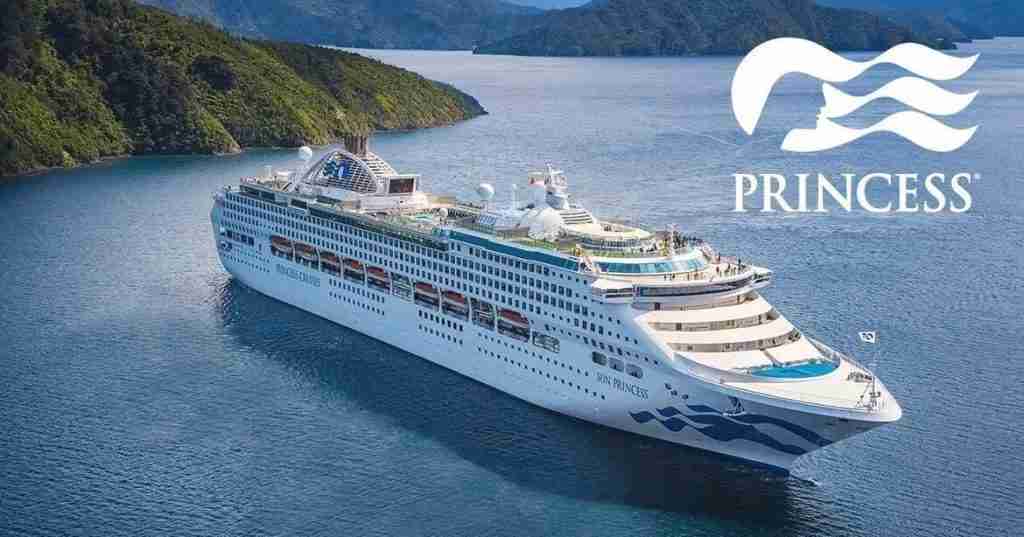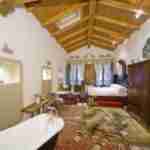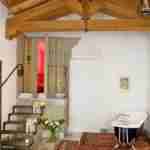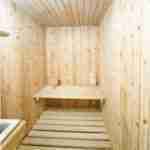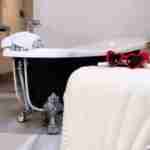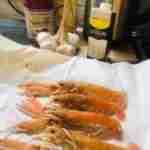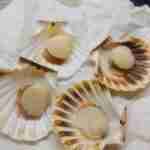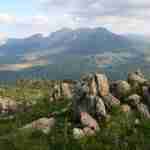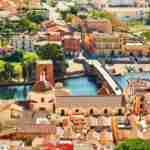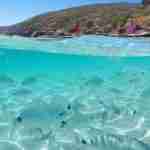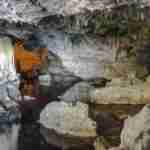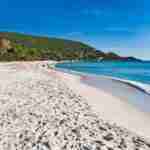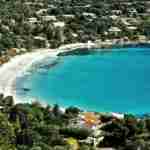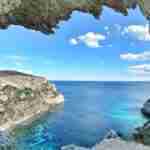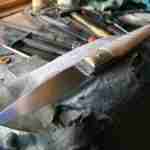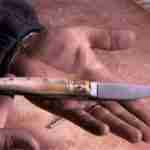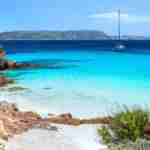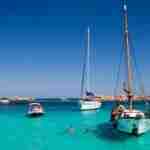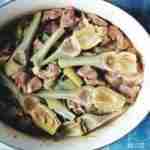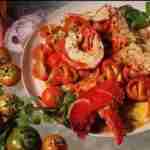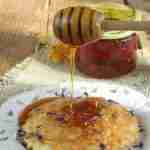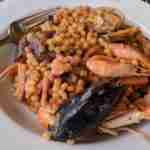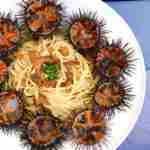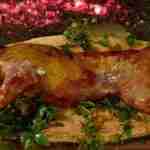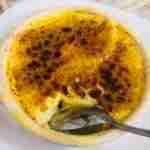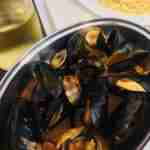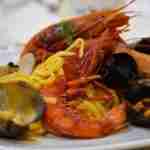Sara’s Travel List – Sardinia, Italy
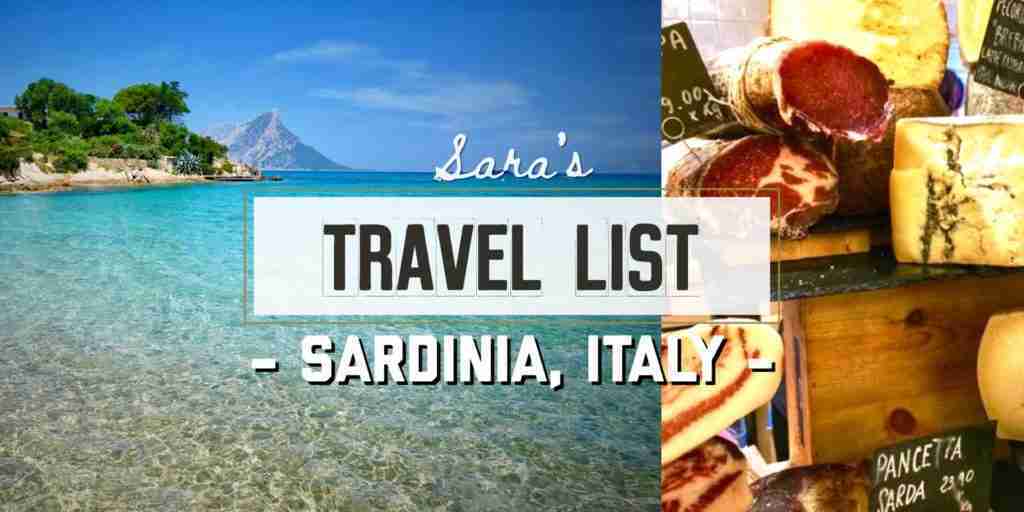
Sardinia is one of those places I almost want to keep as a secret but so gladly will share as I feel it deserves all the praise and laurels it has received over the years.
I had the most wonderful time and definitely will be back. This trip was focused in Cagliari and Alghero (province of Sassari).
Here are my lists to help you navigate Sardinia.
Enjoy.
Overview:
Sardinia is the second-largest island in the Mediterranean Sea (after Sicily and before Cyprus). It is located west of the Italian Peninsula, north of Tunisia, and to the immediate south of the French island of Corsica.
Sardinia is politically a region of Italy. Its official name is Regione Autonoma della Sardegna (Sardinian: Regione Autònoma de Sardigna) (Autonomous Region of Sardinia), and enjoys some degree of domestic autonomy granted by a specific Statute.
It is divided into four provinces and a metropolitan city, with Cagliari being the region’s capital and also its largest city. Sardinia’s indigenous language and the other minority languages (Sassarese, Gallurese, Algherese Catalan and Ligurian Tabarchino) spoken on the island are recognized by the regional law and enjoy “equal dignity” with Italian.
Due to the variety of its ecosystems, which include mountains, woods, plains, largely uninhabited territories, streams, rocky coasts and long sandy beaches, the island has been defined metaphorically as a micro-continent. In the modern era, many travelers and writers have extolled the beauty of its untouched landscape, which houses the vestiges of the Nuragic civilization.
Curious Facts:
-
The island has an above average life expectancy of 81 years, and has the highest rate of centenarians in the world.
-
The famous scene in 1977 film The Spy Who Loved Me where James Bond drives a Lotus Esprit out of the sea was filmed on Sardinia’s Spiaggia Capriccioli.
-
Asinara, a small island off the coast of Sardinia, is home to a colony of wild albino donkeys.
-
Sardinia was previously known as Ichnusa, now name to a famous Sardinian beer.
- Sardinia has over 7000 prehistoric archaeological sites that date from before 1000 BC.
The Province of Cagliari is situated in the southern part of Sardinia, overlooking the Mediterranean Sea on the south and on the east. It is bounded by the Provinces of Nuoro, Ogliastra and Oristano on the north, and by the Provinces of Carbonia-Iglesias and Medio Campidano on the west.
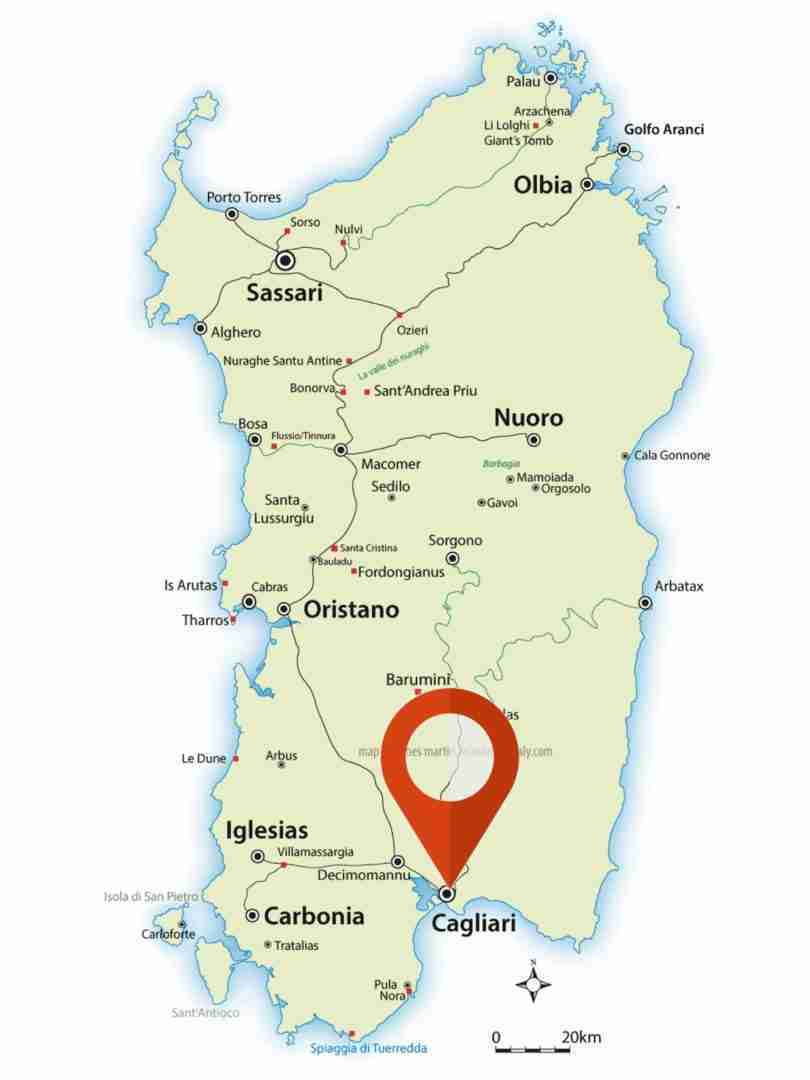
It expands over 1,764 square miles (19% of Sardinian territory) and comprises 71 municipalities, including the City of Cagliari, capital of both the Province and the entire Region of Sardinia. Like the rest of the island, the Province of Cagliari is of rather heteregoneous terrain: the variety of rocks is remarkable, as are the minerals, the highlands, the caves and the coasts.
The Molentargius-Saline Regional Natural Park, in the inner part of the province, is a rare example of an ecosystem in highly anthropized areas. It is one of the most important places in Europe for the extraordinary number of birds that shelter here. One-hundred-seventy-seven among 330 of Sardinia’s birds species live in the Molentargius Basin – more than a quarter of all European bird species. At certain times of the year, these can exceed 20,000 specimens. Among these: flamingos, herons and little egrets.
The park borders with one of Italy’s most ample beaches, the Poetto, extending over almost five miles, and Cagliari’s main beach. Next to the Capital is the Sette Fratelli – Monte Generis Regional Park, one of the largest parks on the island and a natural environment for the Sardinian deer. The Sella del Diavolo’s Promontory is also here – its name derives from the legend that Lucifer carved the profile of his saddle on the rock after being expelled from Paradise.
The eastern part of the Province is made up of the subregion of Sarabus-Gerrei, subjected to considerable drainage works at the beginning of the 20th Century in order to eliminate malaria: it is a wild zone, yet still abundant with characteristic villages.
Alghero is a beautiful city on the northwest coast of Sardinia. Encircled by ancient walls, it’s known for its cobblestoned old center and Catalan Gothic buildings.
Alghero is best known for its beautiful beaches, very good food at reasonable prices, and its catalan origin, in fact it was known in the past as little Barcelona. Alghero is part of the Province of Sassari.
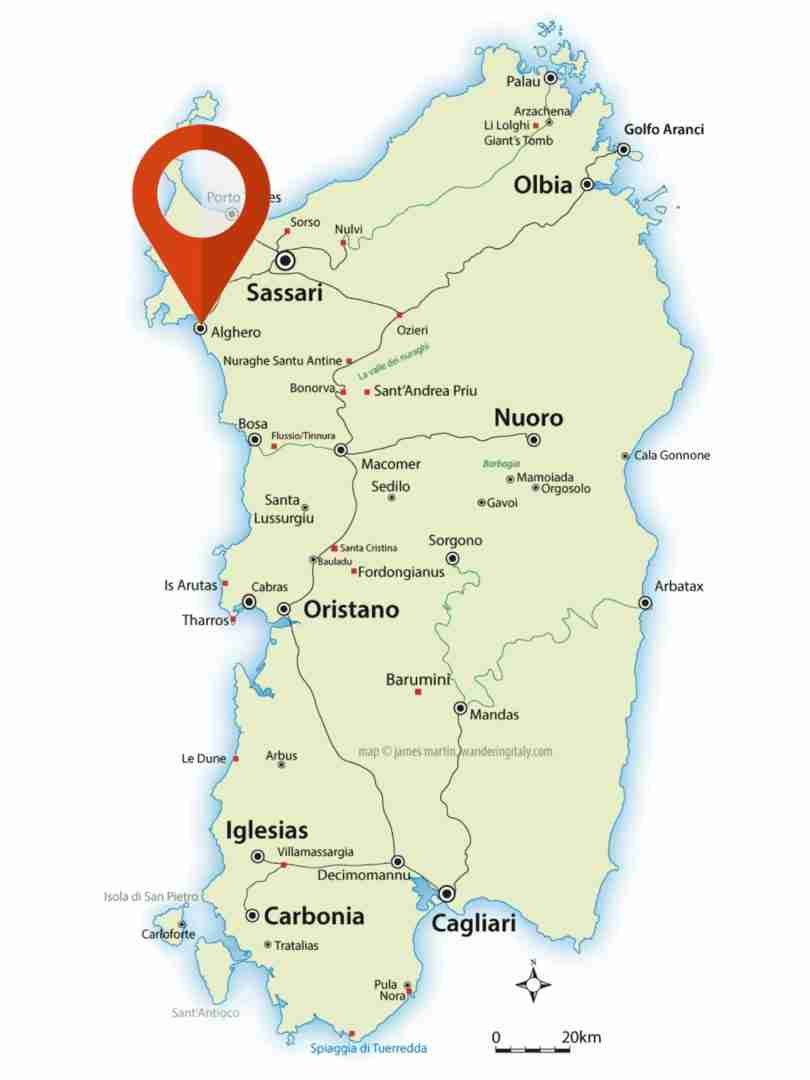
Sassari overlooks the Sardinian Sea to the north and west, and borders with the Provinces of Oristano and Nuoro to its south, as well as by the Province of Olbia-Tempio in the east. The province expands over 1,653 square miles (17.8% of Sardinian territory) and comprises 66 communes, including some of the most beautiful resorts: Castelsardo, Alghero and Stintino, in addition to the Island of Asinara.
Sardinia’s only natural lake, Lake Baratz, belongs to Sassari (while man-made Lake Coghinas lies in Sassari’s west). Then, one of the vastest plains of Sardinia, the Nurra, is a former malarial region that was drained during the Fascist era. Of course, the province is also made up of numerous beaches, by turns rocky and sandy.
More inland, rather, lies the territory of Logudoro, characterized by a hilly and mountainous landscape. Logudoro boasts the third town in Sardinia for height above sea level, Pattada. Pattada is particularly known for its production of craftmade knifes, sa Resolza.
From 1600 to 1500 B. C. the Nuraghi Civilization rose up in this area (as in other parts of the island), leaving behind innumerable traces.
Moving Around:
Cagliari’s center can be quite busy and the narrow streets and roads can be tricky to drive in, so if you’re planning to move around, consider renting an electric bike, use the public transportation or walk.
In Alghero traffic is pretty relaxed and the roads are very easy to navigate, so a car rental is a great option and will allow you to explore further into the beautiful places. The public transportation is rather affordable with bus tickets starting at 1€ (aprox. 1,10$ US).
Keep in mind that Sardinia does not offer Uber like services yet.
- ItaliaRail is the best place to book and buy your train tickets, book them online to save time and money. You can go from Cagliari (South of Sardinia) to Sassari (Northern Sardinia) by train for 17€ (18,69$ US).
- Rent a Car (if you're renting a car, plan ahead and book prior to you arrival, or rent directly in the airport, the fares are cheaper)
- Walk and use the local bus lines. (Plan ahead and you'll see, public transportation is simple to use and not expensive.)
- Electrical bikes and skates are a wonderful option. You can rent or take your own, ACTON has some cool electrical skateboards, they're very portable and are perfect for cities.
Where to Sleep:
There are plenty of hotels, hostels and Airbnb options both in Cagliari as in Alghero. The first part of my stay was in a lovely Airbnb and the second in the most wonderful The Place Cagliari and the third in a lovely small budget bed and breaksfast, so I can give you the scoop on three different options.
- In Cagliari's center, you will find The Place, set in Cagliari's historic centre, just below the ancient castle, The Place offers luxurious rooms in an elegant 19th-century building. Cagliari Cathedral is 10 minutes away on foot. I absolutely loved the suite I stayed in... My favorite thing about it: the sauna. The host Enrico, will help you navigate Cagliari and give you some tips on where to go and visit.
- Airbnb is one of my favorite options as I love to go to local markets and cook at home with fresh local ingredients.
- In Alghero there are plenty of good options for all budgets. You can search whichever option you prefer according to your needs. Click here for a list of hotels, bnb's and hostels in Alghero.
Where to go, what to do and visit:
From walks to scuba diving, to pasta making and knife shopping; You can enjoy a number of activities in Sardinia. It would be impossible to list them all, so here’s a condensed list to help you get started:
Cagliari
- Visit the Archeology Museum.
- Visit the Cattedrale di Santa Maria.
- Visit the Roman Amphitheater.
- Take a walk in the historical center get lost in the narrow streets and enjoy the views.
- Go to Mercato di San Benedetto.
- Go to the Genn’e Mari beach, it’s not in the center, but I promise it will be worth the time, you can also go to the Poetto, Cagliari’s main beach, it stretches for about eight kilometers, from Sella del Diavolo (the Devil’s Saddle) up to the coastline of Quartu Sant’Elena.
Alghero
- Visit the Nuragic Village of Palmavera.
- Visit the Capo Caccia Lighthouse and Neptune’s Grotto.
- Visit Argentiera. The eerily abandoned mining town of Argetiera has its roots in Roman times and was once the largest Sardinian producer of this precious metal.
- Visit Alghero historical center. Go to the Cathedral, walk around La Piazza Civica and visit the churches.
- Go for a walk along the lungomare.
- Go to Maria Pia Beach.
Other places:
- Visit Pattada and explore the great knife artisans.The Pattadese Knife (also called “Resolza”) takes its name from Pattada, a small village in the north of Sardinia, renowned for its artesanal and artistic creations. This foldable knife is the most famous Sardinian knife. The Pattada knife has been made since the 1800, and features the traditional Mirto leaf blade. The blade length may vary depending on the use, but it’s usually around 12cm (4,7 inches), which is considered the original length, ideal for agropastoral use. In fact, it was originally used mainly by farmers as a very versatile working knife.
- Go to Bosa. Located in the north central coast of Sardinia, it is a small village of ancient origins. Crossed by the river Temo (only navigable river in Sardinia) is characterized by typical colorful houses in pastel colors, the wrought-iron balconies, the narrow alleys of the old town … give it a magical atmosphere in Bosa handing the title of one of the most beautiful villages of Italy.
- Go to Oliena. The areas around Oliena, a village rich in history, founded during the Roman era at the foot of the limestone massif, Corrasi, are characterized by captivating valleys and mountains, making the territory a natural monument.
- Activities: Snorkling, Boat Rental and Tour, Wine Tasting, Pasta Workshops, Kayak etc.
What to do in Sassari, Sardinia
Eating and Drinking in Sardinia:
Eating and drinking is one of my favorite things to do while traveling (and at home); It is also one of the best ways to know a people’s culture and traditions. The Sards do know how to enjoy life’s pleasures.
Typical Sardinian food:
-

- Lamb with artichokes is a traditional sardinian plate, often cooked during Easter period. It is rather easy to find genuine lamb meat in Sardinia, like fresh artichokes as well, so the freshness of products is granted. Combined with artichokes the delicious lamb meat is very tasteful. First of all the meat should be stewed for about an hour and then artichokes should be added.
-

- Zuppa gallurese or “zuppa cuata” how someone calls it, is a typical dish of Gallura, the northern region of Sardinia which extends from Badesi to San Teodoro and has the best beaches of Sardinia. The word “zuppa” means soup, but actually it is not a liquid dish, although the broth is used to prepare it. The consistency is similar to that of lasagna. It is a mix of slices of bread (different types of bread can be used), cheese and lamb broth, baked in the oven.
-

- Catalan style lobster is a typical dish of Alghero, a catalan town on the north-western part of Sardinia. Obviously this precious crustacean is fished in the local sea on the western coast near Alghero. After being boiled, lobster is served as a salad with fresh tomatoes and onion.
-

- Bottarga is one of the most famous and tasteful delicacies of Sardinia originally coming from Cabras, a small town on the western coast of the island. This dried mullet roe can be tasted in thin slices as a starter or can be used to dress pasta, usually spaghetti o linguine.
-

- Seadas or “seada” in sardinian– is a traditional sardinian dessert made of fried pastry filled with delicate lemon-scented cheese and topped either with warm honey or sugar. Normally the cheese used for Seadas is a young Pecorino.
-

- Seafood Fregola with saffron. Fregola, which means breadcrumbs, is a typical sardinian pasta made of semolina and rolled into small balls. There are plenty of recipes for cooking fregola but the most delicious is definitely a seafood fregola: with clams, prawns and served with some saffron broth and a loaf of crunchy bread. Not everyone knows that Sardinia is a major saffron producer in Italy.
-

- Culurgiones is a sardinian first dish arriving from Ogliastra, the wildest part of Sardinia. It is a kind of home-made dumpling pasta stuffed with delicious mint-flavored potato cream. Normally it is served with fresh tomato sauce and basil or with butter and sage.
-

- Spaghetti with sea urchin. The right time to taste this plate is from November till April when the season of “ricci di mare” is open. It is forbidden to take the sea urchins in other periods of the year and it is possible to collect only a limited number of sea urchins per fisherman in order to protect these species.
-

- Suckling pig or “porcheddu”.This is probably the most famous Sardinian dish. The suckling pig or “porcheddu” must weigh from 4 to maximum 6 kilograms and should be cooked entire with myrtle leaves for some hours and then served on a cork tray.
Menus are divided into the following courses:
Antipasti – Appetisers such as bruschetta (toast with toppings), grilled and marinated vegetables, and meat and cheese platters. They can be quite filling so, a good tip is to share.
Primi – The first course consists of pasta, gnocchi, risotto, or a hearty soup. There are hundreds of pasta shapes in so learn the regional specialties for your destination.
Secondi – The second course is meat or fish with nothing on the side.
Contorni – Side dishes such as potatoes, grilled or fried vegetables, salad, and beans. If you want your meat or fish to have anything with it, you must order it separately.
Dolci – Desserts. The menu is usually quite simple and will include fruit, gelato, a cake or tart, and a regional specialty.
Caffè – It’s very common to finish your meal with un caffè (espresso).
Restaurant suggestions:
- Sa Piola Ristorante (Cagliari).
- Pizzeria Cerere (Cagliari). Tip: Book with days in advance... they are always packed.
- Spaghetteria Ci Voleva (Alghero). This place was one of my favorites, simple and so well prepared food. The best mussels I've eaten in a while.
- Osteria Barcelonetta (Alghero).
- Find your own. Walk around, get lost in the beautiful streets and you'll find amazing osterias and restaurants.
Other useful tips:
- Tipping is not mandatory, use this as a reference: in hotels €1 to €1.50 per bag is standard; €1 per day for cleaning staff. In restaurants, if service isn’t included, give a euro or two in pizzerias, 10% in restaurants. In taxis tipping, again, is optional, but most people round up to the nearest euro.
- The currency is the Euro (1€= 1,11$ / 0.86£).
- Restaurants vary in prices, the average would be 25€ per person but you can eat for as cheap as 10€. A three-course meal is around 30€-45€.
Final remarks:
- I could definitely live in Sardinia.
Share:

Sara Moura
With a deep taste for the uncensored, lover of science, poetry, and all things gastronomy. I'm a curious human with a penchant for laughter.
Disclaimer: This post may contain affiliate links of products I’ve used or approve; If you buy from them, you won’t pay a penny more but I receive a small compensation that helps me create more content like this! Thank you 🙂
Related Posts

Best Carnivore Snacks: 10 Carnivore Diet Snacks and Subscription Boxes You’ll Love
If you’re on the search for the ultimate carnivore snacks to fuel your diet, look no further! In this guide, I’ve curated a list of the best carnivore snacks that are sure to satisfy your cravings and keep you on track with your dietary goals.

Gametime Promo Code: Your Ticket to Excitement at Unbeatable Prices
Imagine unlocking exclusive access to your favorite events at unbeatable prices. Well, guess what? With the Gametime promo code, your ticket to endless excitement just got a whole lot cheaper!

Shane Gillis SNL Return: Navigating Comedy’s Unfiltered Landscape
The entertainment world is buzzing with anticipation as the announcement of Shane Gillis SNL return. After a previous stint filled with controversy and subsequent departure from the show, Gillis is set to make a highly-anticipated comeback.

